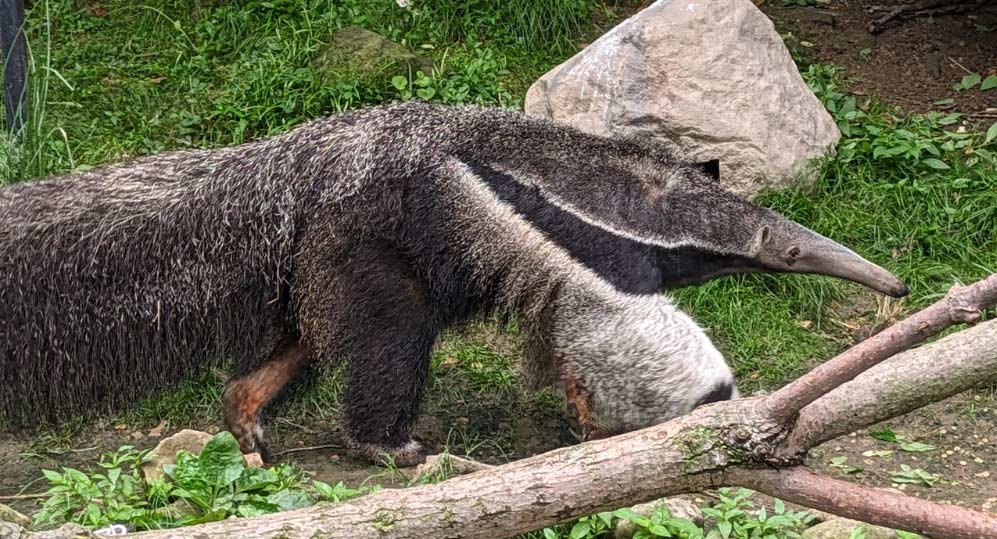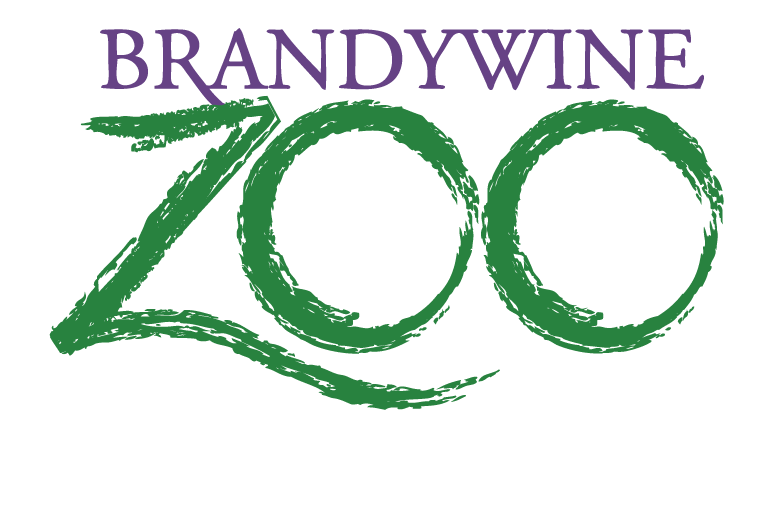Giant Anteater
MYRMECOPHAGA TRIDACTYLA

HABITAT
Grasslands, savannas, and open areas of tropical and dry forests
GEOGRAPHIC REGION AND RANGE
Range starts in Southern Mexico and ends in Northern Argentina.
DIET
Insectivore/Omnivore. Eat mostly termites, ants, soft-bodied grubs, and ripe fruit. In the zoo, they eat insectivore diet, soft fruits such as avocado and banana.
PHYSICAL DESCRIPTION
Gray overall, with a black stripe starting under the nose/chin and going to the middle of the back. The stripe is outlined in white, tan, or gray and extends down the front legs. Anteaters have poor eyesight and hearing but a very strong sense of smell, nearly forty times better than that of humans.
LIFESPAN
Natural Habitat: 14 years
Under Human Care: 26 years
THREATS
Habitat loss is a large threat to anteaters, with fires especially posing a threat to their grassland habitats. In South America, they are hunted for their meat and for trophies. It is estimated that only 5,000 giant anteaters are left in the wilderness, while a small number (around 90) live in zoos in the US.
STATUS
Vulnerable
FUN FACTS
A giant anteater‘s sense of smell is about 40 times greater than a human‘s.
Anteaters are good swimmers, and will swim using a freestyle stroke and can use their long noses like a snorkel!
Giant Anteaters are the largest of the four anteater species, reaching 6-8 feet in length from elongated nose to bushy tail.
Though they have no teeth, Giant Anteaters have a roughly 2-foot-long tongue that helps them to eat up to 30,000 ants and termites every day!
Giant Anteaters walk on their knuckles to protect their sharp front claws, which are used to rip open ant and termite nests.
What are AZA Zoos doing for Giant Anteaters?
Giant Anteaters are cooperatively managed in AZA Zoos and Aquariums through a Species Survival Plan (SSP).
